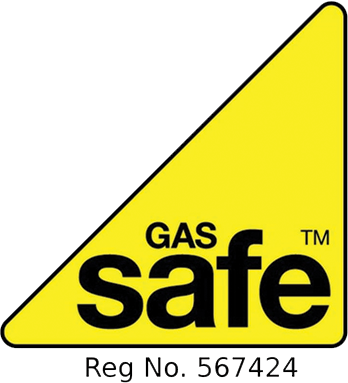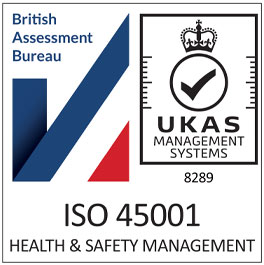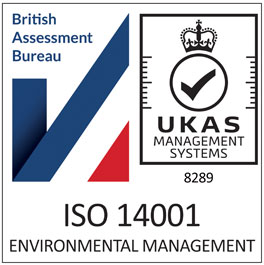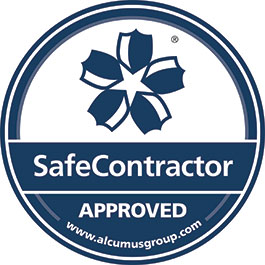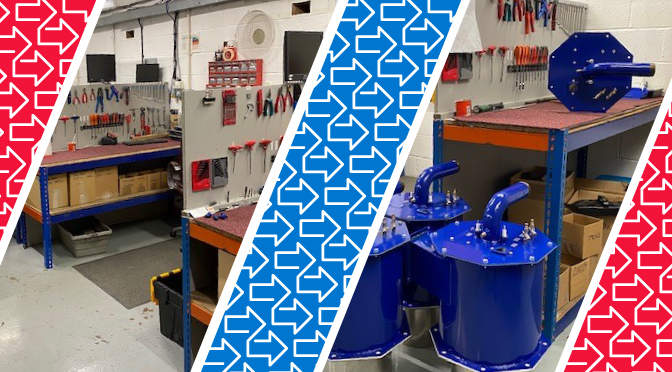
Perhaps continual improvement has the somewhat mistaken reputation of revolving around austere, clinical decision making; an approach rooted in the Japanese automotive production lines of the twentieth century, where emotion and the joy of work is dismissed in the pursuit of absolute efficiency.
But Onur Eren, Innovation Manager at University of Warwick’s WMG, would beg to differ. “It’s all about unleashing your employees to do more of what they’re best at,” he tells us. “This in itself may likely lead to improved job satisfaction and in turn better staff retention, which is a cost saving in itself but also a boost for the culture of a business.”
Faced with ever-diminishing factory floor space and lengthening production cycle times, we approached Onur and WMG’s SME Group after meeting at a Made in the Midlands event, with the aim of tightening up a range of – as we went on to learn – ‘non-value-adding processes’.
“The trick is to embed process change at a human level first”, says Onur. “It’s paramount that staff understand the concept of wasteful steps in their day-to-day. It may seem counterintuitive initially, but once the lightbulb goes off it’s blindingly obvious.” With process improvement a costly exercise at the best of times, by far and away the cheapest – yet also most effective – method is to get workers performing the tasks to implement the change themselves.
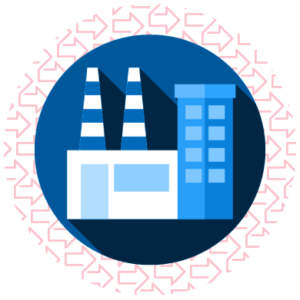
As Onur emphasised to us, “operational excellence can spread throughout an entire organisation if everyone is able to find new ways of efficiency saving independently, whilst all working towards the same objectives and goals.”
Space: the first frontier
With factory space the biggest bottleneck for us, it was unavoidably a key area of focus during our process improvement project. “We were fortunate enough to be able to move the machine shop and welding bays to a new manufacturing unit down the road”, says Alan Thompson, our Operations Director.
The newly freed up space was then allocated to a combination of general storage and individual workstations, each with its own dedicated set of tools to allow for various types of assembly in the same area. This in itself made several related processes far more efficient, such as parts picking and tool selection and usage.
“You could implement Lean methodology to how you empty the dishwasher – it’s a matter of coming up with a procedure for consistency”
Alan reflects on what came before: “previously it was the team that moved around the different benches, which always started off fine but unavoidably ended up with tools scattered about the various assembly points. This created general untidiness but also, I now realise, inefficiency in our manufacturing methods.”
The newfound real estate was also put to use in several other stages of our manufacturing processes:
- A dedicated test area for components vastly improved the associated workflow, where previously they were simply tested directly in the middle of the assembly area
- A new production planning information area gave far better visibility of workload and daily tasks

Later refinements incorporated some much-needed digitisation, adding monitors to each workstation so that assembly diagrams could be displayed at the click of a mouse, rather than requiring yet more movement of personnel around the factory floor to pick up paperwork.
Keeping your parts close to your chest
With assembly space and working patterns seen to, attention naturally moved to the very components that are used in the manufacturing process. “Much of our storage was a floor above, on a mezzanine level”, says Alan. “As part of our work with Onur, we moved it down to the shop floor and into U-shape bays based around products.”
Thanks to this change, efficiency savings around picking and putting away times have been significant and had several knock-on benefits, as Alan explains: “The stores guys now have more time to pack orders – in a newly designed packing space at that – which previously was carried out by assembly staff.” Furthermore, newly freed up space on the mezzanine means that we have been able to move out of long term storage that was costing us thousands.
“One of the principle questions to ask is: ‘how does value flow through the shop floor?’”
The benefits of bringing parts and stock down to the assembly level has delivered a raft of benefits: many man hours saved, considerably less distance travelled, an environment that is overall far better from a health and safety perspective. “Now there’s no more cramped gangways, no more carrying parts down from the mezzanine, no more forklifting goods back upstairs and, thankfully, no more shifting finished order pallets around to make space for the vans inside for loading”, says Alan.
All of these improvements echo some of Onur’s most pertinent comments: “One of the principle questions to ask is: ‘how does value flow through the shop floor?’ If you can identify the bottlenecks and the steps that slow down the speed at which an order gets to leave the front door, you can often tackle the most significant sources of waste.” With assembly such a core part of our manufacturing process, any gains made here were sure to have had a considerable impact on the rest of our operation.
A lean future awaits
The trick with ‘continual’ improvement isn’t exactly hidden in the name, but such is the investment required to get a project of this nature off the ground that you could be forgiven for wanting to rest on your laurels once the first round of efficiency savings have been made.

“Improvements are still a work in progress, with more to be made as we develop”, Alan remarks. “What this has shown is that the first few changes are made, but we then spot a further improvement, and then another still, so the trick for the long term will be to keep the ball moving.”
Onur mirrors this sentiment towards instilling continual improvement as part of the fabric of the organisation. “We’re not just talking about process improvement, but process innovation, or making the same product in a better, faster, and cheaper way, while standardising how you make it to an ever more consistent level. This doesn’t happen overnight, but on the other hand you never run out of ways to innovate in the long term.”
Further improvements scoped out for later implementation include better labelling in the stores, to make picking even faster, and a digitised production planning process that can be shown on monitors for all to see.
“It’s all about unleashing your employees to do more of what they’re best at”
One thing is for certain: the positive impact on our business has been tangible. As Alan is happy to remind people, “our output of completed burner orders is at a very healthy level, but without having to resort to any form of overtime which in the past we’ve occasionally had to rely on.” This in itself is worth tens of hours per month, possibly more.
Having made around 25% savings in man hours already, it’s safe to say that our approach to manufacturing has been set on a new pathway, but it remains to be seen whether any of the team will be taking their learnings home with them and applying them to the more familiar domestic environment. “You could implement Lean methodology to how you empty the dishwasher,” says Onur. “It’s all about coming up with a procedure for consistency.”
And consistent we will be.

